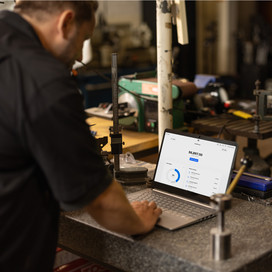Table of contents
Business expenses, operating costs, operating expenses, operating budget – whatever you call the expenses you need to keep your business running, what matters most is how you track and leverage that information. Insights from the Bank of Queensland indicate that poor financial management and limited access to funding are common reasons why businesses fail. Other challenges include flawed business structures, ineffective business strategies or underestimating your competition, according to the Australian Banking Association. Many of these obstacles can be avoided by understanding your operating expenses and using this insight to plan ahead.
What are operating expenses?
Operating expenses are expenses that a business owner incurs in operating their business. These expenses can include rent, inventory costs, administration fees and advertising expenses. These expenses will typically fall into two categories: fixed costs or variable costs.
Fixed costs remain consistent month over month and include overheads such as rent and utilities. Variable costs can vary and include items like delivery costs or entertainment expenses from dining out. With so many different costs associated with doing business, it can be difficult to identify the operating expenses for your business.
The importance of identifying operating expenses
Unlike other costs to your business, operating expenses are necessary to keep your doors open, so knowing and understanding these expenses can help you manage your cash flow. Looking at the relationship between your operating expenses and your gross profit margins, for example, can signal whether you are pricing your goods and services efficiently. You can identify your operating expenses in several ways, such as by using software, by working with a professional, or by listing them with a pen and paper.
Operating expenses and profitability
Identifying how much profit your business makes can inform the overall profitability of your business and when it could break even. Increases in operating expenses can lower profit and impact profitability. Understanding your expenses can help you better manage your business’s cash flow and what reinvestments you are able to make.
Role of operating expenses in financial analysis
Knowing your operating expenses, which are referred to as operational expenditures (OPEX), allows you to compare expenses to income and helps you forecast your business’s profitability. You can see operating expenses summarised in an income or profit-and-loss statement. This can also help you make decisions about whether any operating costs need to be cut.
Examples of operating expenses
Operating costs can differ from industry to industry, but there are many commonalities. Here are some examples:
- Marketing and advertising expenses: Advertising, marketing and promotional event costs may be a part of promoting your business. Whether you purchase ads on social media or print a flyer for an in-person event, these costs are part of your operating expenses.
- Rent and lease: Office space, equipment leasing and rent
- Utilities: Electricity, water, sewerage and gas costs are business expenses you need to keep your business operating.
- Office supplies: From stationery, printing or photocopying expenses to cleaning supplies like disinfectant, these are part of office supply costs. These can also include consumables such as paper cups, snack foods or first aid supplies.
- Labour costs: Employee salaries and wages, benefits such as health care or retirement, and payroll taxes are all part of the operating expenses you need to support your business’s staff.
- Insurance costs: Property insurance, liability insurance, workers’ compensation insurance and more
- Maintenance and repairs: Building maintenance, such as replacing tiles, as well as painting and equipment repairs
Strategies to reduce operating expenses
There are a number of tactics to reduce operating expenses. This could be in the form of cutting costs, such as by automating certain processes, reducing office supply, or investing in software to improve efficiency or free up staff time.
By monitoring and analysing your expenses regularly, you can find ways to cut unnecessary costs, or find ways to spread them over time to minimise impact.
![]()











